Content Marketing in B2B
Your definite guide for Business-to-Business content marketers
Content Marketing gets you in front of your target group and shows how your business fulfills their demand. The aim is that your potential customer wants to learn more about your product, service, and business. Content Marketing is important because it is a natural way to create leads. Your B2B content marketing strategy strives to position yourself as a thought leader. For example, by using educational, fact-based content.
This article is the definite guide on B2B Content Marketing and how to create a Content Marketing strategy for a Business-to-Business market.

3 Article Highlights
Table of Contents
Table of Contents
- What is B2B Content Marketing (and why does it matter)
- History of Content Marketing for B2B
- What B2B Content Marketing can do for Your Business
- How to Create a Content Marketing Strategy for B2B
- 9 Proven Content Formats That Work for B2B Brands
- Educational Content for B2B Markets
- Examples of B2B Content Marketing Assets
- B2B Content Marketing Glossary
- Summary
Newsletter
Subscribe and Learn B2B Marketing.
What is B2B Content Marketing (and why does it matter)
As the name indicates, content marketing is a strategic marketing discipline for creating, sharing, and promoting content to reach your target audience. Content Marketing B2B happens between two companies. It’s a communication strategy by a business to target another business.
Definition of Business-to-Business Content Marketing
The renowned Content Marketing Institute defines the term as follows:
The importance of content marketing for B2B increases
In the 12th annual B2B Content Marketing report, 77% of B2B marketers state that their organization has a content marketing strategy. 68% already have at least one full-time content marketer dedicated to the subject. Every fourth large company (with 1,000+ employees) employs 6+ full-time B2B content marketers.
One reason for this growth is the proven success of taking content marketing actions. Content has a direct influence on the value your target audience receives.
For example, a 2,000-word whitepaper has much more value than a shiny full-page print ad for a potential customer. While both measures have their rightful place, content-rich whitepaper ads have more value.
Thus, a content marketing strategy is more demanding than classic advertisement plans. Not surprisingly, 22% of the marketing budget is already spent on B2B content marketing.
Is content marketing in industrial marketing more important than in B2C markets?
The nature of B2B content marketing is fact-based, educational, and more rational compared to B2C content. B2B content must be useful and value-adding above all else. Each piece of content strives to provide value to a potential customer. Industrial goods are by trend complex and have a high explanatory effort. Thus, the nature of B2B goods influences how B2B content strategists work at heart.
This is also a huge chance for savvy B2B content marketers. Creating and distributing valuable content, is a long-term strategy and creates a unique value proposition. If done right, your company is perceived as though leader in its specific segment.
The logical consequence is trust. Your target audience trusts your content. An outstanding base for every sales team to close a deal.
To put it briefly: No content marketing in B2B is not an option anymore. A proper content strategy in B2B is part of the foundation of every marketing plan. Content marketing allows you to build authority, trust, and credibility. It helps your potential customers and makes them understand your products or services.
History of Content Marketing for B2B
One may think that content marketing is a temporary digital age fashion. Well, to some extent, this is true. The terminology content marketing has been increasingly used in recent years. But the idea and principles of content marketing for B2B markets are not new.
The history of content marketing goes back to the late 19th century. Marketers wanted to get closer to their customers by creating a personalized marketing mix. The base was detailed research of the buyer’s behavior and needs. Increasing personalization led to the approach later known as inbound marketing.
Historical Content Marketing in B2B
Almost 300 years ago, Benjamin Franklin first published his yearly “Poor Richard’s Almanack”. His goal was to advertise his printing business.
Many marketers consider “The Furrow“, a customer magazine published by the American manufacturing company John Deere, as the first and oldest example of content marketing B2B. Printed the first time in 1895, the journal is still available today.
Joe Pulizzi published an outstanding infographic on the subject back in 2016.
The many examples shown in the infographic outline the same technique. Even though content marketing is centuries old, its power hasn’t declined. The natural curiosity of all humans nurtures the demand for content that explains, instead of only aiming to sell. A profound purchase decision decreases the likeliness to make a mistake.

The Furrow. Image Source: Contently
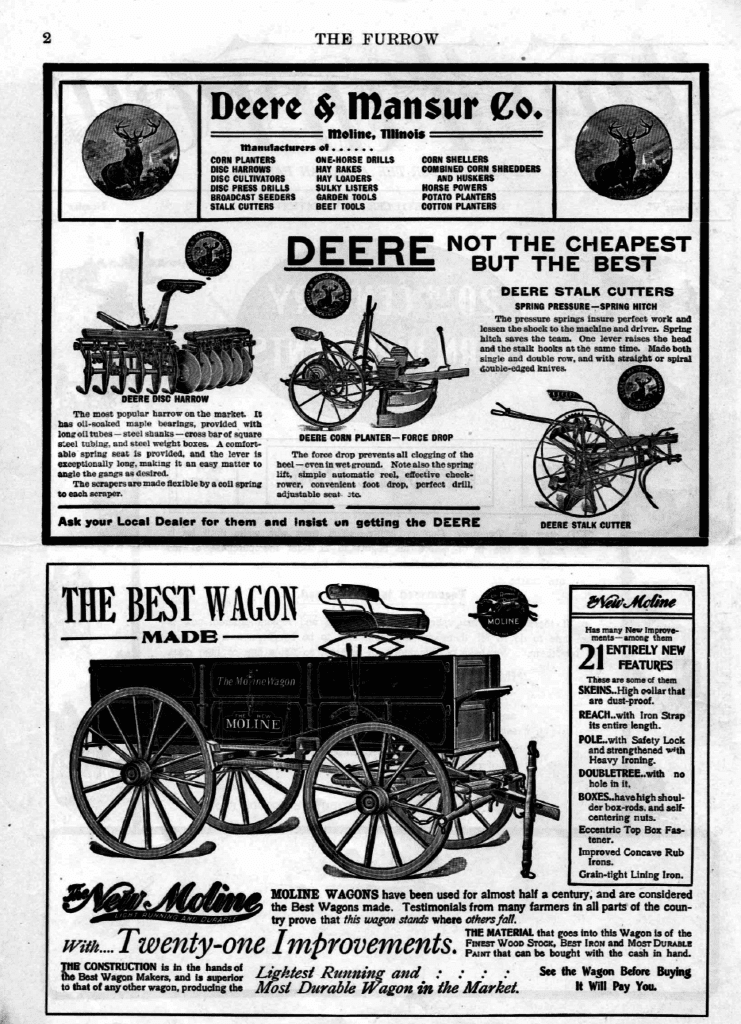
The Furrow. Image Source: Contently
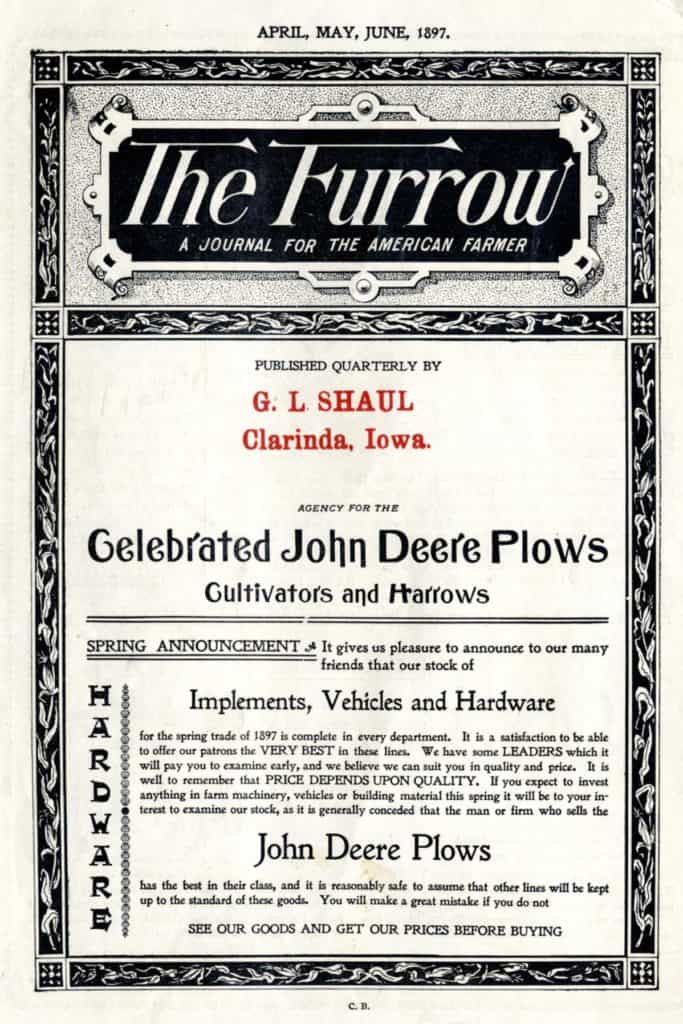
The Furrow. Image Source: Contently
All B2B content marketing examples increase the knowledge of customers about the company, brand, product, or working principles. This influences how the audience perceives your business.
What B2B Content Marketing can do for Your Business
Content marketing is a powerful way to build customer trust and grow your business. It’s also a great way to keep your customers coming back. Another aspect of content marketing is “thought leadership”. To position your company as a know-how leader in a certain industry is a big competitive advantage and – again – creates trust in your brand. Further, content marketing leverages your efforts to grow organic website traffic. Here are some stats to back up the importance of content marketing in B2B markets:
- 43% of B2B marketers have a content marketing strategy paper (Content Marketing Institute)
- 60% of marketers say that content marketing generates a demand or even leads (CMI)
- Content is a core business strategy for 81% of marketers (CMI)
- Some further 60+ statistics on content marketing in b2b is available by ahref
Let us have a look at the three mentioned aspects:
B2B Content Marketing creates trust
Your customers do not want to buy from a salesperson they do not know or trust. Customers want to buy from someone like them. Here is where Content Marketing comes in. It is a powerful way to build customer trust and credibility.
Many customers claim they prefer and actually expect to be educated by B2B content marketers. The customer wants a trusted advisor who shares their values and gives them open access to information. Customers build trust via non-self-promotional learning resources. Educational Content Marketing in B2B serves this purpose.
Thought Leadership by using Content Marketing strategies
Thought leaders or opinion leaders are the preferred source of information in their field of expertise and influence people’s sentiment. They become the trusted partner who moves and inspires people.
To position yourself as a thought leader, you need to get some outstanding expertise. And put this knowledge on the shelf in the form of content.
A well-planned content marketing strategy is key to achieving this position. Build your industry thought leadership by regular content publishing. Customers will trust you, your brand, and your promises. The result: increasing sales.
In this respect, we are not talking about blogging only anymore, but writing eBooks and white papers, educational videos, and online courses. To give your prospects comprehensive insights on your industry.
B2B content marketers create organic website traffic
Organic traffic is driven to websites without paying for advertising. Search engines mainly generate this traffic. According to ahref, Content Marketing is a long-term strategy that generates consistent search traffic growth. Hence, if you’re not doing content marketing, you’re missing out on a huge opportunity. Further, you keep relying on paid traffic sources such as Google Ads or LinkedIn Ads. Content marketing allows you to cut down on the amounts you spend on paid traffic.
Use your expertise to create original content to drive qualified traffic to your company’s website. And, at the same time, increasing brand awareness among potential customers.
How to Create a Content Marketing Strategy for B2B
Many B2B businesses struggle to make content marketing work. One reason why they fail is a lack of strategy. Other pitfalls are limited or no budget and resources and using the wrong tools. A further aspect is a lack of knowledge from B2B content strategists on establishing a content marketing paper step by step.
First: what is a strategy? There is an easy image to remember and differentiate between a strategy, tactics, plan, vision and aims:
- Vision: A vision is your purpose and the reason your company exisits.
- Aim: Aims specify what to achieve and translate the vision into real life.
- Strategy: A strategy gives direction and outlines how to achieve your aim.
- Tactic: Is a specific way of fulfilling your strategy. It outlines how to make the strategy work.
- Plan: A plan is the action based document to make things happen.
7 steps of a B2B Content Strategy:
- Identify Your Audience
- Audit Your Existing Content
- Define Aims
- Determine Content Type
- Determine Distribution Channels
- Create a Content Calendar
- Measure Results and Analyze Your Content Performance
1. Identify Your Audience
What’s the point of publishing a blog post or creating a valuable piece of content that no one knows about or sees? You want people to read it! Thus, you need to identify your target audience first.
The segmentation of your audience can base on different perspectives. You either focus on one aspect or combine them.
But audience segmentation is only relevant if you have content to distribute to these segments. If you do not have the resources to adapt your content, there is no reason to segment your target audience.
Option 1: Segmentation based on Sales Funnel stages
Needs are different in each stage. A prospect looking for first orientation requires different contents than a hot lead about to buy from you. These segmentation criteria work best if the human / personal influence is limited. This is the case when selling standardized products or “one fits all” products.
Option 2: Segmentation based on needs and behavior
The “Buyer Personas” concept assumes there are archetypical personas. They are representative of a specific audience. The extend of segmentation knows no limit. It all depends on how well you know your audience. Use Buyer Personas if the targeted audience is heterogeneous and needs further segmentation. This is especially true if media behavior differs from audience to audience.
Further options include all types of classic market segmentation. For example, geographics, demographics, psychographics or behavioral segmentation.
2. Audit Your Existing B2B Content
A content audit (also called a ‘content inventory’ or, for websites, a ‘site audit’) is a great way to identify the gaps in your existing content. The audit phase is when you examine your existing content’s strengths, weaknesses, and opportunities.
This is essential for planning for your content marketing strategy. Because you want it to be aligned with the goals of your business. Not just created because you thought, “Oh, we should have some ‘brochure’ type content on our site somewhere”. To put it briefly: ask yourself, “why does this piece of content exist?”
Note: if creating a content strategy for the first time, you need to define your aims first. Otherwise, you are going round in circles
Evaluating your current state will not only guide you through creating and promoting new content. It will also help you determine what you should be doing on your existing content. And where to focus your efforts.
First, review the current status of each piece of your existing content: what it is, who created it, when was it created. Then analyze its performance: e.g. views and engagement. This will give you a clear picture of how to develop this B2B content asset further.
3. Define Aims
To make a good B2B content marketing strategy, it’s vital to define your goals. It is impossible to create an effective content marketing campaign without defining the purpose of your content marketing strategy.
B2B content strategists start by brainstorming how content marketing can affect the product portfolio. Then rank those opportunities based on their value and relevance to your audience.
The goals should be specific and measurable, so you don’t waste time and money on content that doesn’t drive results.
Don’t set vague goals like “generate more traffic” or “improve SEO.” Instead, think about what action you want people to take after reading your content like making a sale or downloading an eBook.
Then, map out how many people need to do this action to succeed. For example: if your goal is to collect 500 qualified leads per month, you might need 2,500 downloads of an eBook for this strategy to succeed.

examples on good and bad formulated aims
Just to be sure and as a reminder. Aims, wherever possible, are formulated SMART:
- Specific
- Measurable
- Attractive
- Realistic
- Terminated
4. Determine Distribution Channels
This is possibly the most important step. Choosing which channels to publish on is essential of all the stages in developing a content marketing strategy for B2B. You must narrow your options, select the right publishing platforms and decide if you need the supplier’s help.
Publishing content on various channels is the heart of your content marketing strategy. This, again, reflects where your audience spends time. Ultimately, you have to decide which channels are relevant for your business. And how you can distribute your content using those channels.
Distribution channels are the paths that deliver the content to your customers. There are: owned media, paid media, and earned media. Here is a breakdown of each distribution channel type, including advantages and disadvantages:
Owned Media
Owned media is a term used to describe the different media channels that a business or brand completely owns. The term is used for online and offline marketing resources. Examples are your company website and blog, newsletter, and social media. Although social media posts still are bound to the social media network.
The big advantage is full control over these channels and no advertising cost.
Limited reach and/or relevance and the high cost of establishing these channels are disadvantages.
A strategic approach to content marketing is built on owned media.
Paid Media
The opposite of owned media is paid media. But, these are channels you pay for. Examples are all social media ads and search engine advertisements. As well as industry magazines or platforms you advertise with.
Fast access to your audience and scalability is the biggest advantages. The downsides of paid media are high costs and total reliance on these media channels. If you stop spending money with them, you lose access to your audience.
So, paid media is only to leverage owned media and balance the shortcomings of your own media network.
Earned Media
Thought leadership builds earned media. Magazines, influencers, and other social media users will write about you, if you are the go-to person in your industry. Earned media and active PR management are closely linked.
An advantage is the high credibility you achieve when others talk about you. Social proof happens on social media when customers testify about your skills.
To complement the categorization of media channels, offline vs. online is still valid. However, there are more hybrid channels evolving due to the COVID-19 pandemic. An online version now accompanies a former offline industry event.
5. Determine Content Types for B2B Markets
This is the logical step after deciding on your distribution channels. Each channel has its own strategy and audience. You will want to know which style and type of content to create before starting.
Each platform influences the content type, as some work better than others. For example, you want to publish videos on YouTube and not animated infographics. This content is suitable for your website or an educational blog.
As a B2B content marketer, you’re expected to create different content formats. Including text, graphics, audio, and video. The formats are okay if the content is engaging and meets the audience’s needs. Therefore, a basic definition of content types are:
- Text
- Graphic and Image
- Audio
- Video and Animation
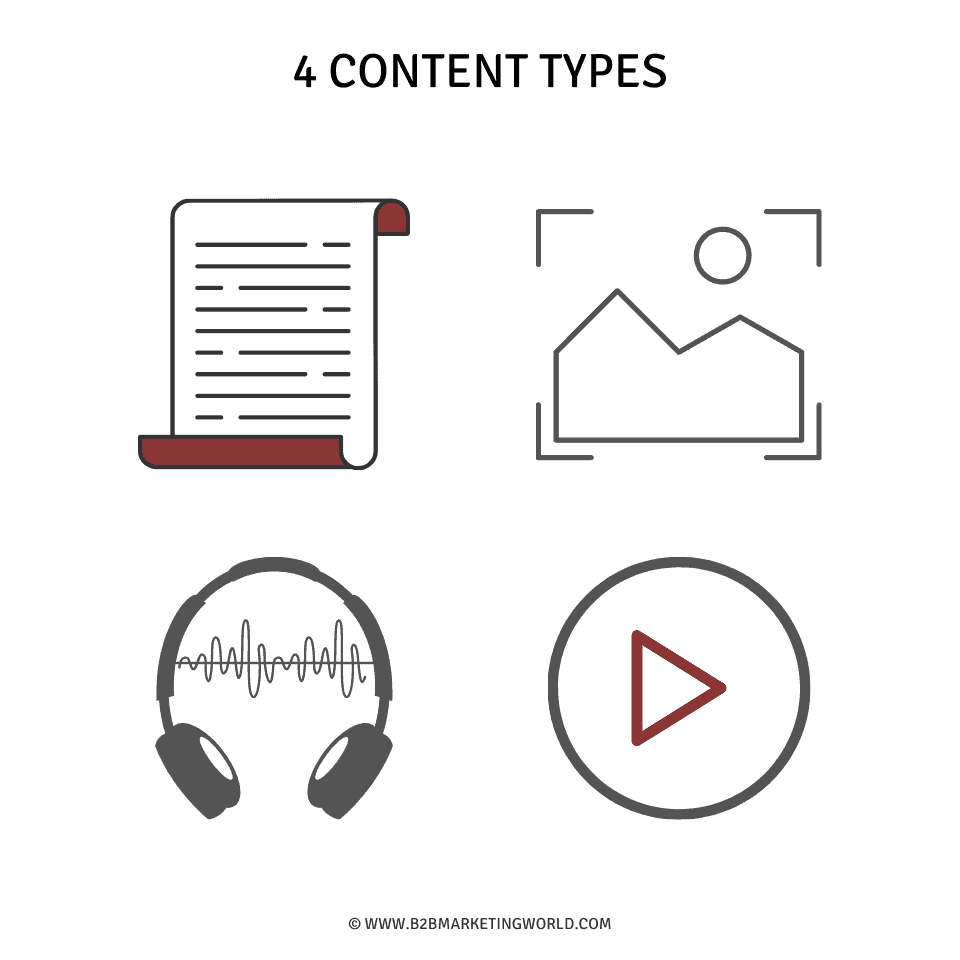
4 Content Types © B2B Marketing World
All assets (the final content piece) often consist of many content types. For example, a blog post consists of text and graphics and may include a video. Yet, a printed brochure only consists of text and graphics.
In B2B marketing, you may have seen a lot of multimedia content being pushed aside in favor of written articles. The main reason is that most B2B marketers consider multimedia formats to be expensive.
There is also the issue of delivering content fast. The average online reader expects new content on a regular base. This requires quick turnaround times for writers. Small marketing teams often have other responsibilities beyond writing. Like updating social media accounts, monitoring comments, etc.
At this point, a content calendar comes in handy.
6. Create a Content Calendar
A content calendar is also known as an editorial calendar. It will help you organize, prioritize, and schedule your content marketing process. The calendar is the center of your content planning and production efforts. It includes all distribution channels. Like your blog, social media presence or e-mail marketing. A good editorial calendar helps you stay organized and on schedule, so your audience stays engaged.
Content calendars typically include the following information:
- Upcoming contents
- Topic
- Content type
- Distribution channels / media the content is published
- Copy date / publishing date
- Status / production updates
- Related other marketing activities or campaigning actions
The purpose of a Content Calendar
A content calendar is especially important if you handle many media channels, topics and markets simultaneously.
Let’s use some math here. Let us assume you publish on 3 channels and have 4 main business topics you want to communicate. Further, your company has 2 focus markets: Germany and the UK. A reasonable aim is to publish at least 2 pieces of content on average per week per channel. Have a look at this simple example on your content calendar per week:
- total of 48 content pieces
- 24 content pieces per language
- 16 publications per channel
- 12 contents per topic
Further, a good content calendar also documents the content production process. Each content production has at least 4 states: planned, in production, ready for publishing, published. That makes 192 information updates of the above described 48 pieces of content.
So, a content calendar is vital for both small businesses and large enterprises.
Backlinko offers some further deep-dive reading on content calendars and how to create them.
7. Measure Results and Analyze Your Content Performance
B2B Content Marketing is an ongoing process. It’s not something that you set up and then forget about.
At this stage, you have defined the goals of our content strategy, targeted a relevant audience, decided on publication channels, and created the right assets. Now, you can measure the results and analyze and review the content performance.
You have to measure results, to find what is working and what is not working. This data is the base for further content analysis and adjusting your strategy based on the data.
Which data to measure depends on the publication channels and your aims. Yet, a basic set of KPIs may look something like this:
KPI Set for B2B Content Strategists
9 Proven Content Formats That Work for B2B Brands
Content marketing B2B is a different ballgame to B2C content marketing. It relies more on selling via educational content rather than products and services.
Still, content marketing is often thought of as creating text and images. But there are plenty of other content formats that brands can use. It is about building up a body of content that supports your audience’s goals and fits your brand values. The key is to choose formats right for your audience. Don’t randomly write a blog post or publish an infographic.
Your content must cut through the noise and touch your target readers for content marketing to deliver results. Emotionally as well as fact based. Thus, it is not enough to educate. You need to give them a reason to act on the information you have shared with them.
Below, I summarize different content formats typically used by B2B content marketers.
1. Corporate Website
Your corporate website is the central content hub. It serves as the landing page of all your online marketing efforts. That makes your website copy of outmost importance. A clear customer journey educates users. From branding and portfolio overview to product information and deep-dive education content formats. Your corporate website needs to fulfill many purposes.
Different content formats contribute to a successful customer journey. While using hero images and bold text copy on your homepage, a product page needs to convey facts, UPSs and a reason to believe.
A corporate blog completes your content hub. It further strengthens your thought leadership and branding initiatives.

2. Blog Posts
Blogging is a great way to establish yourself as an authority in your niche, increase traffic to your website, and grow your audience.
Blogging also helps build brand awareness for your business. As well as establish yourself as a credible source of information for potential clients.
Blogging is a pillar of many successful marketing strategies in today’s digital age. Having an engaged community – one that follows your blog and shares your content – can increase your share of voice. For example, adapt the tone of voice to humanize your brand.

3. Whitepapers and eBooks
Whitepapers and eBooks are both long-form content formats. B2B marketers use these formats as an effective way to share information with their audience. They allow you to cover specific topics and present a lot of information in an organized fashion.
These content formats are typically available only after registration. So-called “gated content” serve as lead generation tools. Typically, prospect customers exchange personal data, e.g., e-mail address and name, for information. Whitepapers and eBooks are amongst the most popular gated content formats.
Further, long-form content advocates your company and brand as thought and know-how leaders.

4. Business Case Studies
In B2B markets, it is all about trust. Many businesses cannot showcase their products on a shelf, e.g. industry pipeline engineers or technical consultants. One way to create trust is to show proof of concept, also called proof of capability. The aim is to make use of existing customers and past projects. Case studies are like customer references but provide much more details on how the task was fulfilled.
A common case study structure is:
- What was the customer problem?
- How was the problem solved?
- What was the contribution of your company?
- What makes this solution stand out compared to the competition?
- Credibility from the existing customer

5. Webinars
Webinars are used to share knowledge and expertise on a specific topic of interest. They provide information, advice and guidance and promote sales of products and services.
The format has been heavily used during the COVID-19 pandemic and remains trendy. The big advantage of live webinars is the direct interaction between speakers and attendees. Webinars cover both a presentation and a Q&A session.
You can host a webinar yourself or use an industry partner to do so.

6. Templates, Checklists and How-to Guides
Providing tools for your customers is a smart move for many reasons. First, it is an effective way to create goodwill and enhance your image as an authority in your niche. Second, the more you help your customer (especially with free templates and checklists), the more they rely on you.
Think of it this way: if you can help your customers, you will be right at the front of their minds when they need the service you offer.
As a B2B business owner, you can take advantage of this by creating several templates designed for your ideal clients. You show them you care about more than making a turnover by providing free templates and checklists to help people with their issues
And last, people will give away personal data in exchange for templates, checklists and how-to guides. The expectation of fast, valuable help is worth getting on your e-mail list.
That is why these content formats are often called lead magnets.
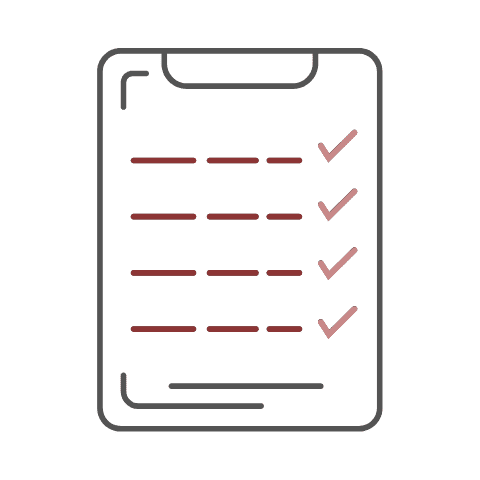
7. Tools and Calculators
B2B marketing can be heavy on technic at times. Educational content and how-to guides are the one thing. Providing tools and calculators your target group needs is an outstanding way of content marketing.
This calculator, for example, converts physical parameters. The tool is of high value and settled within the branded environment of a corporate website.
Tools and calculators are bound to attract backlinks. And these links positively influence your SEO rankings.
Below you see an example (screenshot) from a Viscosity Calculator of Anton Paar

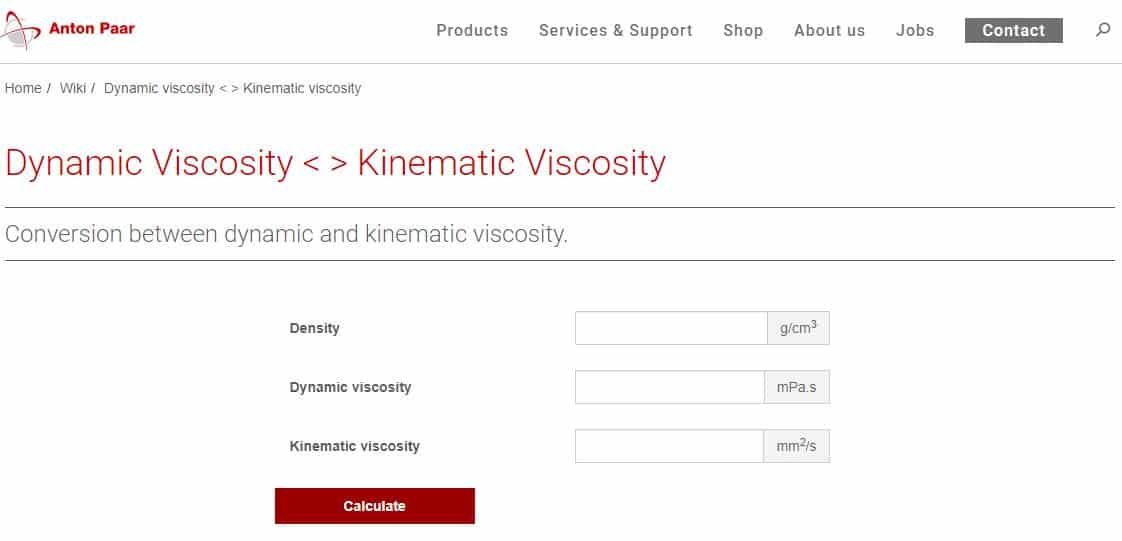
Screenshot of Viscosity Calculator © Anton Paar GmbH
8. Learning Courses
Learning can be a lifelong pursuit, and it does not stop after high school or university. Learning courses are a great way to provide knowledge and expertise on topics of importance to your target audience. They are rich in visuals, case studies, and infused with actionable advice
Whether you aim at technical know-how or enhance your customers’ skillset, learning courses are an elegant way of educating your target group.
Need proof? Look at how many thousands of people have taken Udemy courses. Use this content format for your business purposes.

9. B2B Podcasts
We covered formats heavy on text, images, and videos. For example, podcasts are a great addition to yet another content type: voice. Podcasts have taken the B2B world by storm, and for good reasons too. They are a great way of telling stories and sharing your expertise with others.
There are over 2,000,000 podcasts available. But, this format is not something to avoid. The contrary is true. Podcasts and voice-only formats are increasingly popular. As of January 2022, LinkedIn – the biggest professional social network – launched an audio format to use this content type.
Podcasts are a great way to grow thought leadership, share industry insights and increase your brand’s awareness. They make a great addition to your content marketing mix.

Educational Content for B2B Markets
Educational content is a content format that increases the knowledge of your audience about a specific topic. It is the exact opposite of sales pitches. The aim of educational content writing is – as the term implies – to educate your reader. This differs from other forms of content marketing. You are not persuading your customers. Educational content encourages them to learn about your product, working principles or related aspects.
This content format is essential for B2B content marketing strategists. It is the key to thought leadership and high brand trust.
Educating your audience works well at an early stage of the buying process. During the awareness-seeking phase, your target audience is open to learning. They demand to gain knowledge to make an educated buying decision.
Educational content formats are nowhere close to pitching or selling a product. Examples are video guides, how-to-guides, infographics and in-depth long-form blog posts. This aspect is essential, as it creates trust in your company and brand.
While most businesses focus on adults, educational content writing can reach children, teenagers and even college students. An early presence in prospective customers’ minds is an outstanding value to a company. These tactics need to be honest and without an ROI calculation at hand.
How to use content that educates in real life?
Let me explain. For example, you are producing batteries for electrified cars. Your target group is car manufacturers. You deal with engineers every day and try to convince them about your outstanding knowledge of batteries.
Your target group – the engineers – attended high school and university to learn about batteries usage in cars. What influences power density, or how charging influences the battery lifetime.
Here is where educational content comes in. During the engineers’ study, they for sure googled details to understand a battery lecture. And they found, read and loved your educational content on battery. It became a known secret that your long-form blog article on “how to develop batteries” is the best preparation to pass the exam.
Your brand and company became a top-of-mind knowledge provider to these student engineers. Ultimately, they will not doubt your competence once they are on the job.
Your educational content efforts laid the foundation.
This example serves as a role model for the power of educational content writing. It shows how it can be a long-term content marketing strategy in B2B markets.
Educational Video Content for B2B Marketers
Creating educational video content for B2B marketers can be a highly effective way to engage with potential clients and showcase your expertise in a particular industry. There are various online tools available that allow you to make a video online, which can be customized to suit the needs of your target audience.
Example of B2B Educational Content
Have a look on this great example from Animagraffs. This gif infographic explains how a jet engine works. It is a great example of combining text and animations for educational purposes.
Examples of B2B Content Marketing Assets
Learn from Real-Life Examples
Online Quiz Builder as a Lead Magnet
The best B2B content marketing asset I have used is an online quiz builder. Involve.me has been instrumental in generating high-quality, eager-to-buy leads. My company has been using online quiz builders for the past two quarters of 2023, and it has been one of the best lead magnets we have, generating over 100 leads in the span of 45 days. We have tripled the sales of our online products that were struggling to take off.
Beau Bawab, Director of Marketing, Beau B Content
Success of Specific FDA Cybersecurity Whitepaper
The most successful B2B content-marketing asset in recent months is the whitepaper on “Meeting FDA Cybersecurity Guidelines.” The success of this asset is due to its relevance to the audience’s needs and its in-depth research, which positions the company as a trusted industry authority.
The whitepaper was distributed strategically across email, social media, and third-party publications, achieving a remarkable 15.52% pageview-to-submission rate and a 5.17% pageview-to-contact rate.
This asset built trust and engagement with the audience by providing valuable industry-specific insights rather than a sales pitch. The whitepaper on “Meeting FDA Cybersecurity Guidelines” is available for reading.
Carreen Schroeder, Content Marketing Specialist, Benchmark
Powerful Questions Connect B2B Peers
The most successful B2B content marketing asset I have used is a question. Not just any question. This question has been asked as a poll on social media accounts such as LinkedIn, as part of a story on message boards such as the Trailblazer community within Salesforce, and in posts within Facebook groups. The question changes in context based on the audience and their needs.
For a real estate B2B context, the question would be, “If you could go back and give advice to yourself when you started your real estate career, what advice would you share?” This question is powerful because it breaks through to our core need to feel safe. When we can go back and provide advice to our former, less-experienced self, we are, in essence, demonstrating how much we have learned—and it gives us pride and a sense of well-being.
By connecting with B2B peers through questions that resonate so deeply, connections grow and strengthen in turn.
Anna Campbell, Director of Marketing, Corefact
Product Call-Out Posts Boost LinkedIn Followers
A significant increase in LinkedIn followers has been observed by creating product call-out social media posts. These posts provide insights into what is liked and/or disliked about a product’s packaging design, including the messaging and visual elements.
Have a look here
Jason Vaught, Director of Content, SmashBrand
Interactive Infographic Engages Potential Customers
One of the best B2B content marketing assets I have used with great success is an interactive infographic. It was successful because it gave potential customers a digestible way to learn about our product without having to read through pages and pages of text.
To create this asset, we worked with a professional artist who provided illustrations that effectively represented our key points in a visually appealing way. We published the interactive infographic across all of our social channels, as well as targeted blog websites related to the industry.
See the example here
James McNally, Managing Director, SDVH [Self Drive Vehicle Hire]
B2B Content Marketing Glossary
There are many terms related to B2B content marketing, and it’s easy to lose focus amidst all the buzz words floating around. Here is a comprehensive list of terms, which each B2B content marketer should know.
Make sure to check back. This list is updated frequently.
Summary
Content marketing is a strategic marketing discipline that creates, delivers, and shares valuable content to reach your target audience. Increasing numbers of B2B businesses recognize the value of content marketing. 77% of B2B marketers state that their organization has a content marketing strategy.
Although content marketing is often used as a buzzword, the tactic is not new. The history of content marketing goes back to the late 19th century. The first and oldest example of B2B content marketing B2B is a customer magazine by John Deere. The American manufacturing company has published a free customer magazine since 1895. The journal is still available today.
The Value of Content Marketing in Business
The value of content marketing is essential in the following:
- B2B Content Marketing creates trust
- Thought Leadership by using Content Marketing strategies
- B2B content marketers create organic website traffic.
7 Steps to create a B2B Marketing Content Strategy
Today’s increasing importance of valuable content requires a strategic approach. These 7 steps are referred to as Content Strategy:
- Identify Your Audience
- Audit Your Existing Content
- Define Aims
- Determine Content Type
- Determine Distribution Channels
- Create a Content Calendar
- Measure Results and Analyze Your Content Performance
Different Content Types
The creation and implementation of a content strategy lay the foundation. Different content formats aim to provide value to your target audience. Some proven content formats in B2B are:
- Corporate Website
- Blog Posts
- Whitepapers and eBooks
- Case Studies
- Webinars
- Templates, Checklists and How-to Guides
- Tools and Calculators
- Learning Courses
- Podcasts
Content Marketing with the aim to educate
Common ground for B2B content strategists is the usage of education content. The purpose of educational content is to increase knowledge in your audience about a topic. It is the key to thought leadership and high brand trust. Taken to the extreme, educational content writing aims at students or even children. In such an early phase, top-of-mind awareness is an outstanding value to a company.
Stephan Wenger
B2B Marketing Expert, Editor and Marketing Management Consultant
Stephan Wenger is a seasoned B2B Marketing Expert with more than 10 years of experience in leading global companies. His extensive expertise lies in the realms of B2B online marketing, content marketing, strategic marketing, and driving synergy between sales and marketing, including effective lead management.
3 Comments
Leave A Comment
You May Like the Following Articles
Copywriting: Level up your SEO and Content Marketing
What exactly is SEO copywriting and what does it do for my content marketing strategy? Copywriting skills ensure that you find the right words so people respond to your message. It ensures not only that you are understood, but more importantly that your readers feel understood.
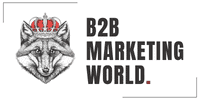
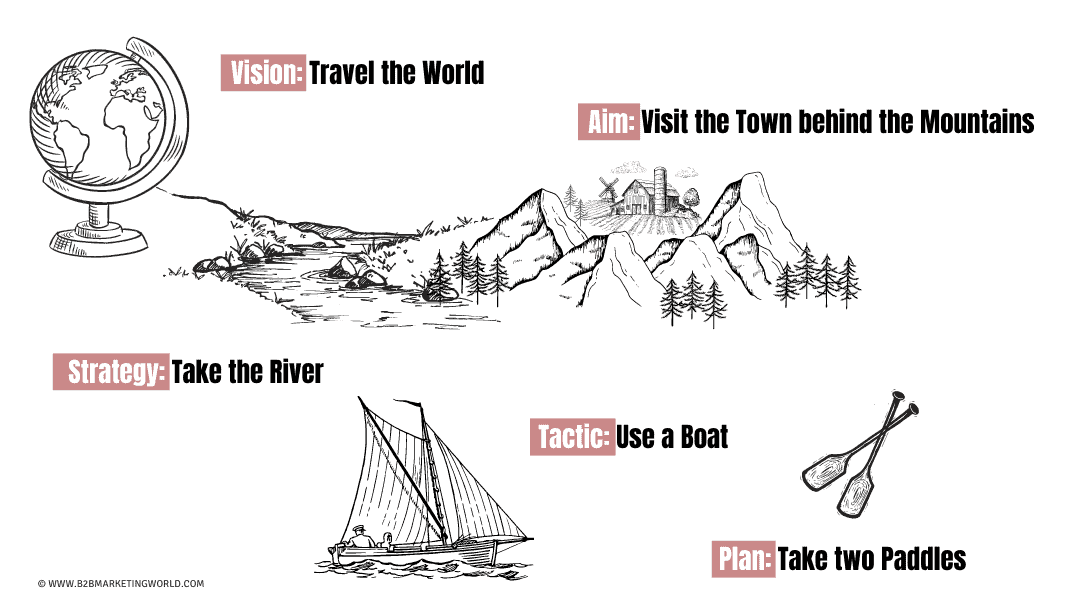
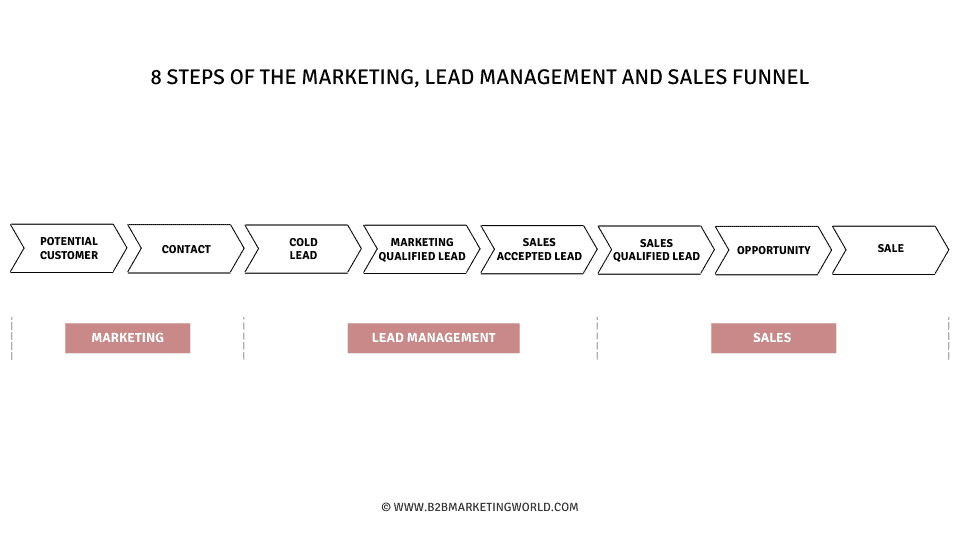

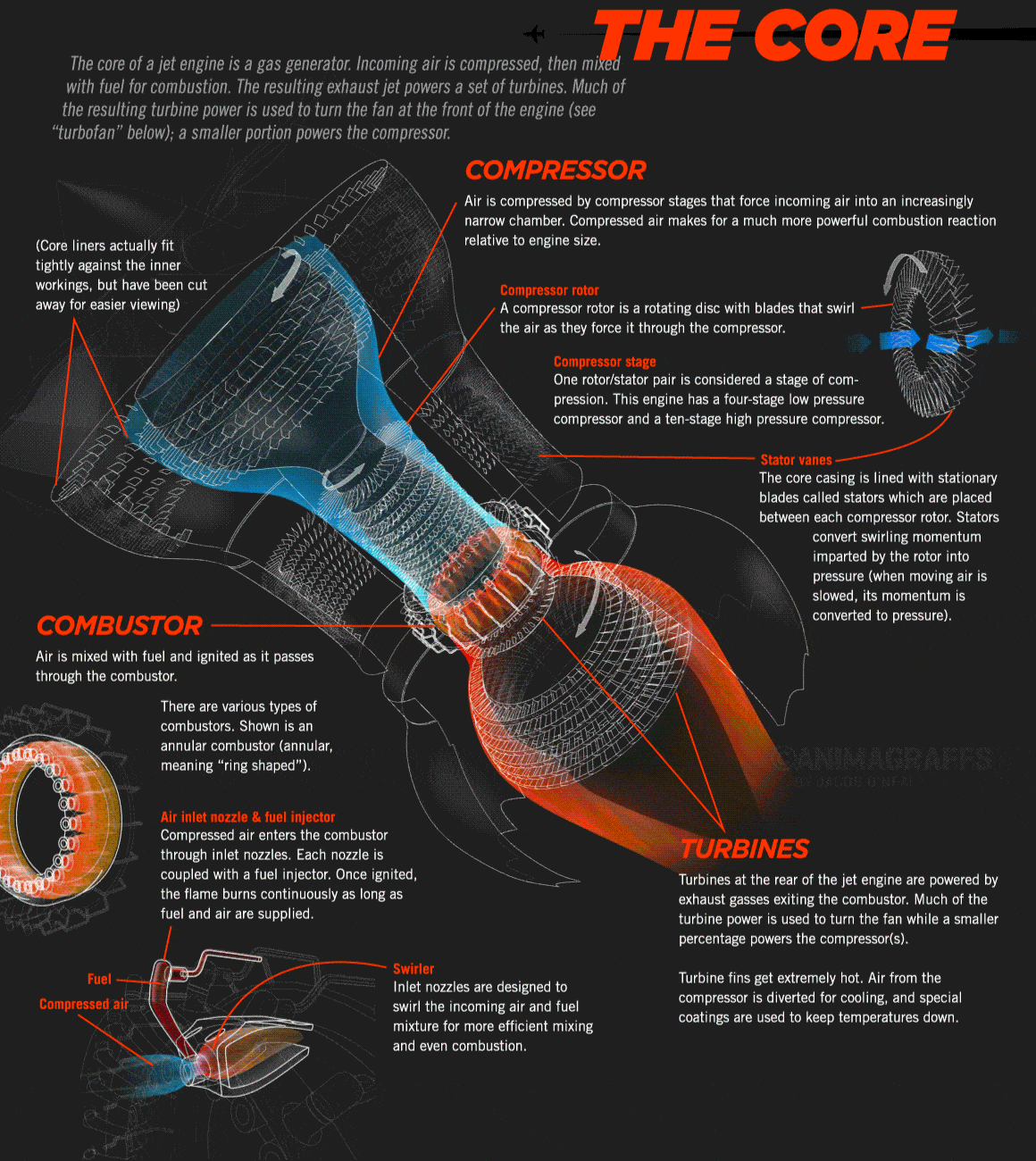






This article offers a thorough overview of B2B content marketing, outlining the best procedures, crucial ideas, and useful equipment that companies can utilise to develop successful content marketing plans. The author offers firms concrete actions they can take to enhance their outcomes while providing a clear and succinct explanation of the essential elements of successful B2B content marketing.
That was a long guide. Thanks for the hard work.
I love how well the blog throws light on the importance of understanding the audience before you do anything else. Your audience is the core reason for all your content marketing efforts, and hence making sure your content is addressed to them is crucially important.